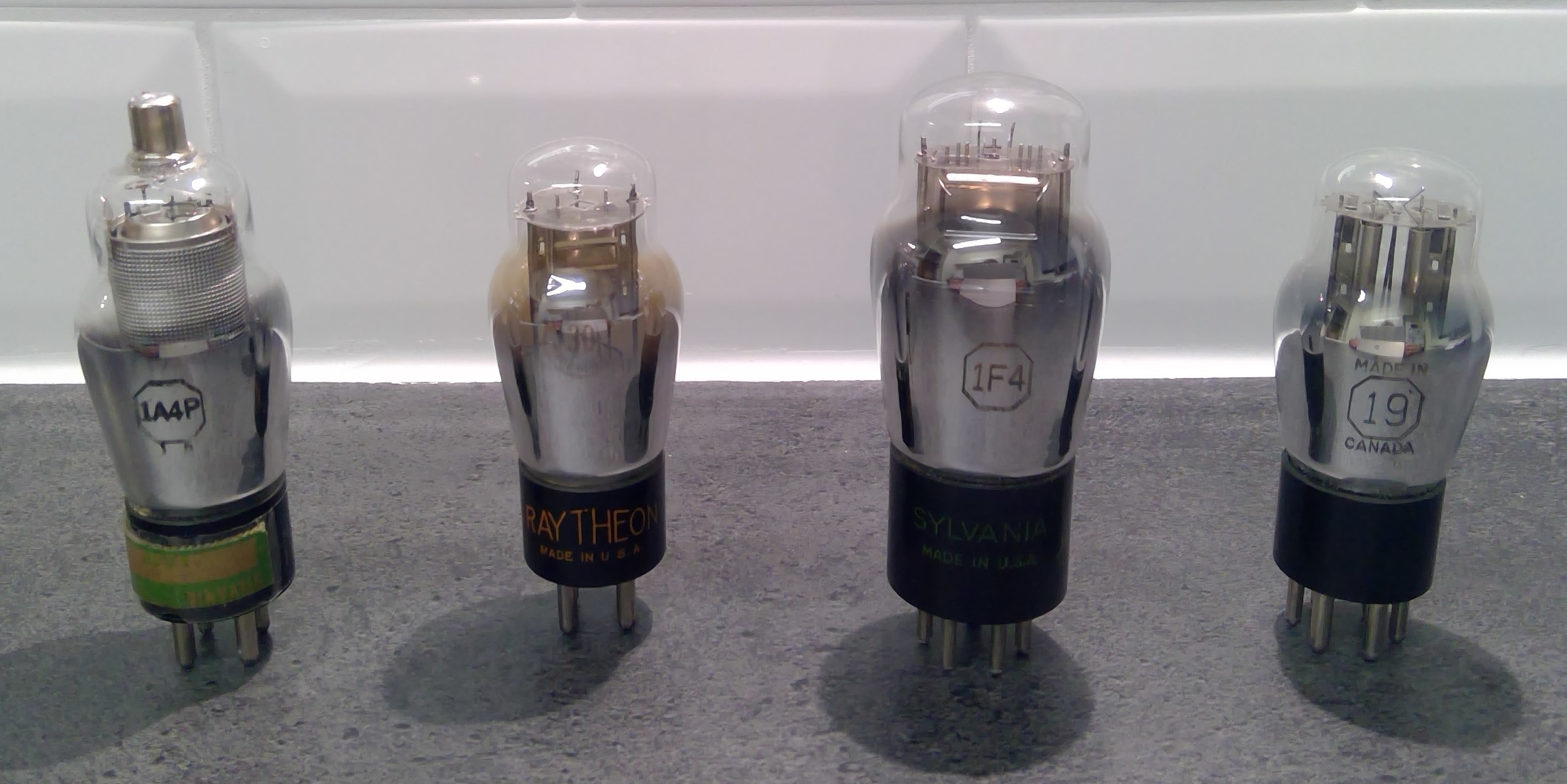I bought most of these a while ago but here they are:

Presenting from left to right:
- 1A4P - a pentode with a 4-pin base, the top cap is the control grid.
- 30 - you can just see the "30" on the glass, this is a low power triode with a 4-pin base.
- 1F4 - a "power" pentode with a 5-pin base, able to put out 0.5 watt of audio at maximum ratings :)
- 19 - a double triode with a 6-pin base. This can be used as a class B audio amplifier to deliver a mighty 2 watts of audio!
Some interesting facts I learned:
- The earliest vacuum tubes had a two-digit numbering system (30, 19 etc etc).
- In the 1930's was a "newer" system number letter(s) number where the first number is the heater voltage (approximately), the letters are arbitrary and the last number is the number of electrodes. The 1F4 uses a last number of 4 because it has the filament, control grid, screen grid and anode, and the suppressor grid is internally joined to the filament.
- All these have 2 volt filaments designed to run from batteries, either a lead-acid cell or a higher voltage fed through a fixed or a variable resistor. When a variable resistor is used, it was called a rheostat and it was adjusted to allow for declining battery voltage during use.
- The filament is very thin and it runs red-hot (or nearly red-hot) and emits electrons, usually just a few milli-amps. A common mistake when using these valves is applying too much voltage to the filament, which burns them out and makes the valves useless.
- Any of these could be used as the regenerative detector, or as a low power audio amplifier to drive a pair of headphones.
- The "power" pentode and the double triode were designed to drive loudspeakers using audio transformers.
- Some simple radios used the 19 double triode as a regenerative detector AND an audio amplifier. Thus making an entire radio from one vacuum tube.
And some terminology:
- These battery valves are directly heated, meaning current is passed through a fine coated wire causing it to heat up and to emit electrons. This heated wire is the cathode and is also called a filament (USA) or a heater (UK/AUS).
- Vacuum tubes (USA) or radio valves (UK/AUS) are different names for the same thing. Sometimes I use one and sometimes the other.
- Valves have an anode which is positive, similar to the collector of an NPN transistor. The anode (UK/AUS) is also called the plate (USA) and collects the electrons emitted by the cathode.
Discussions
Become a Hackaday.io Member
Create an account to leave a comment. Already have an account? Log In.